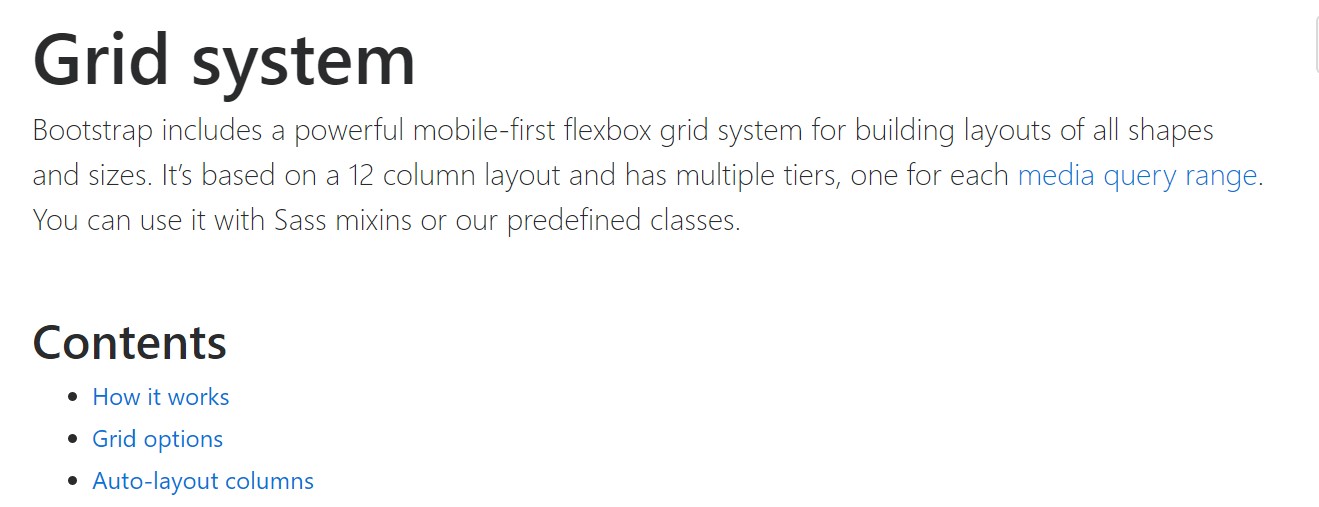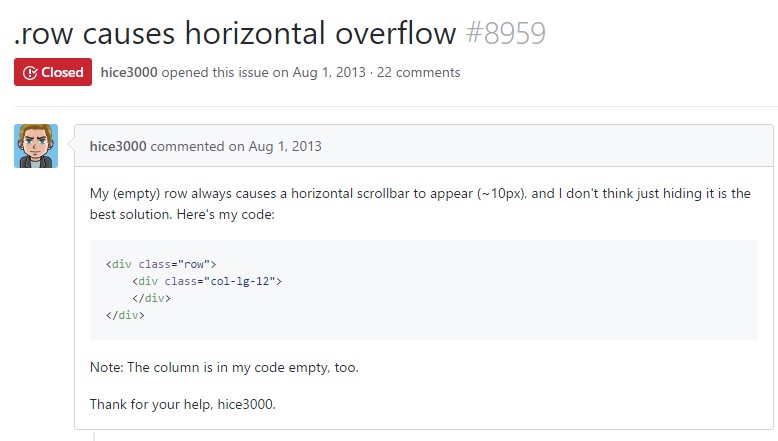Bootstrap Row Form
Introduction
Exactly what do responsive frameworks execute-- they provide us with a handy and working grid environment to place out the web content, ensuring that if we identify it appropriate so it will operate and show properly on any sort of gadget no matter the sizes of its display. And just like in the building each framework involving the most prominent one in its own newest version-- the Bootstrap 4 framework-- involve just a few primary elements which provided and incorporated appropriately are able to help you make nearly any type of appealing look to suit your layout and sight.
In Bootstrap, usually, the grid setup becomes constructed by three main elements that you have possibly currently encountered around exploring the code of several pages-- these are the .container and its own alternative .container-fluid, the .row element and a large assortment of column elements - each one of them holding the .col- class prefix-- these are undoubtedly the containers in which - when the style for a some section of our pages has already been created-- we can put the true material right into.
In the case that you're fairly new to this entire thing and at times may think which was the right manner these three ought to be inserted inside your markup right here is a plain technique-- everything you have to remember is CRC-- this abbreviation comes for Container-- Row-- Column. And considering that you'll shortly adapt noticing the columns as the inner element it is actually not differ likely you would definitely oversight what the first and the last C means.
Few words regarding the grid system in Bootstrap 4:
Bootstrap's grid method utilizes a series of columns, containers, and rows to style and fix material. It's developed by using flexbox and is perfectly responsive. Below is an example and an in-depth explore exactly how the grid integrates.

The aforementioned situation designs three equal-width columns on little, standard, big, and also extra large devices utilizing our predefined grid classes. Those columns are concentered in the web page having the parent .container.
Here is actually the particular way it does work:
- Containers provide a method to centralize your web site's contents. Utilize .container for fixated width or else .container-fluid for complete width.
- Rows are horizontal sets of columns which assure your columns are actually aligned correctly. We utilize the negative margin method on .row to assure all of your material is fixed appropriately down the left side.
- Web content should really be inserted inside of columns, and also just columns may be immediate children of Bootstrap Row Css.
- Because of flexbox, grid columns without a specified width will by default design using identical widths. For example, four instances of
.col-sm will each instantly be 25% wide for small breakpoints.
- Column classes indicate the amount of columns you want to employ outside of the potential 12 per row. { In this way, in the case that you desire three equal-width columns, you may employ .col-sm-4.
- Column widths are set up in percentages, in this way they are actually always fluid plus sized relative to their parent element.
- Columns come with horizontal padding to develop the gutters between specific columns, yet, you may remove the margin from rows plus padding from columns with .no-gutters on the .row.
- There are five grid tiers, one for each and every responsive breakpoint: all breakpoints (extra small), little, standard, huge, and extra large.
- Grid tiers are based upon minimum widths, signifying they apply to that tier and all those above it (e.g., .col-sm-4 puts on small, medium, large, and extra large devices).
- You may use predefined grid classes or else Sass mixins for additional semantic markup.
Bear in mind the limitations along with defects about flexbox, such as the failure to utilize some HTML components as flex containers.
Though the Containers grant us fixed in max width or else expanding from edge to edge horizontal space on display with small helpful paddings all around and the columns grant the means to distributing the display area horizontally-- once again with certain paddings about the concrete content providing it a territory to inhale we're going to aim our focus to the Bootstrap Row component and all of the good approaches we are able to apply it for designating, straightening and distributing its contents working with the clear brand new to alpha 6 flexbox utilities that are really certain classes to put in to the .row feature. And because it is actually a responsive system we're talking each and every of the designing classes we're heading to talk about can possibly be utilized to a particular range of the screen sizes together with the grid tiers infixes like -sm-, -md- and so forth-- we'll observe exactly how in the very next sample.
Tips on how to utilize the Bootstrap Row Form:
Flexbox utilities may be used for establishing the disposition of the elements placed within a .row - you are able to develop the appear horizontally positioned one after another as usual with the .flex-row class, change the system they appear inside the markup with .flex-row-reverse, pace them stacked over each other by the .flex-column class or maybe load them backwards applying .flex-column-reverse
Listed here is how the grid tiers infixes get utilized-- as an example to stack the .row's child elements only on large displays and above use the .flex-lg-column class-- the infixes always come right after the .flex- part of the class name.
Together with the flexbox utilities regarded a .row some really practical justification can possibly be achieved as well-- you can possibly fix all the components left with .justify-content-start or right employing .justify-content-end flexbox classes or else you can easily select to apply what is simply inside of the row in the ideal middle of the container with the .justify-content-center class. Some other alternatives are arranging the free space evenly amongst the components or around them with the classes .justify-content between and .justify-content-around classes used.
This counts as well to the vertical positioning that in Bootstrap 4 flexbox utilities has been simply dealt with just as .align- element. Applying all the elements lined up to the very top edge of their container component is executed by .align-items-start designated to the .row containing them, aligning them with the bottom-- with .align-items-end, centralizing-- by using .align-items-center.
Another options are aligning the objects by their baselines being fixed the class is .align-items-baseline - very effective for legibility reasons-- and spreading all the components in height and so they suit the level of the container or else in other words-- get as tall just as the highest one-- gets attained with the .align-items-stretch - very handy for cards with features changing in length of descriptions for instance.
Each of the flexbox utilities specified thus far support independent grid tiers infixes-- include them right before the very last word of the matching classes-- just like .align-items-sm-stretch, .justify-content-md-between and so on.
Conclusions
Here is generally just how this necessary but at first look not so adjustable component-- the .row element happens to grant us quite a few powerful styling solutions with the brand-new Bootstrap 4 framework embracing the flexbox and dismissing the IE9 service. All that's left for you currently is thinking about an appealing new methods using your brand-new devices.
Examine several online video training about Bootstrap Row:
Related topics:
Bootstrap 4 Grid system: main documents

Multiple rows inside a row with Bootstrap 4

Yet another complication: .row causes horizontal overflow
